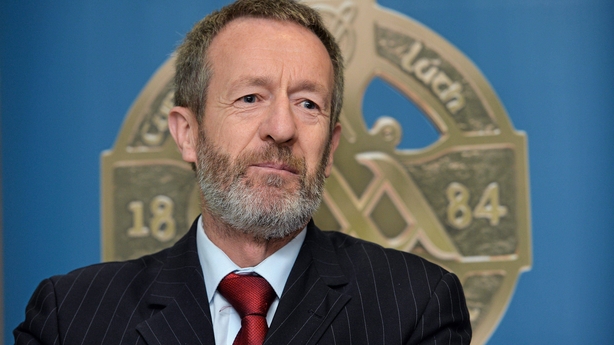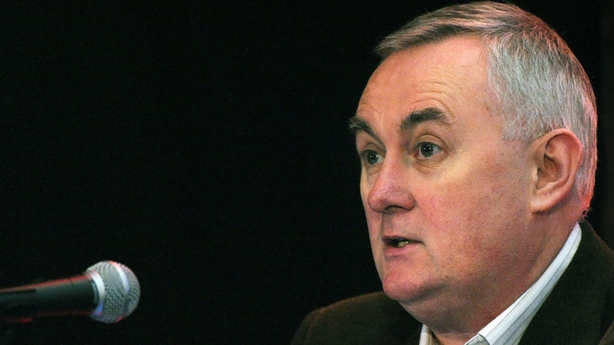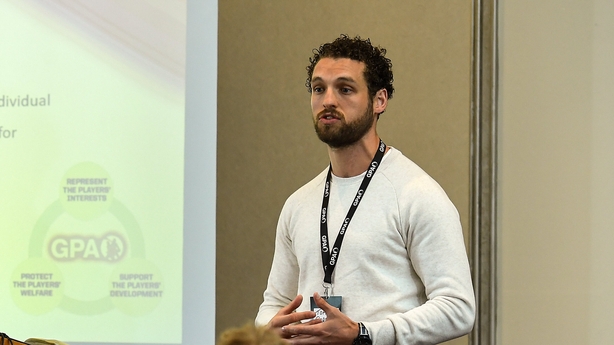In 2003, a pilot scheme aimed at establishing the best framework for the integration of the the ladies football and camogie associations into the GAA was announced at Croke Park.
It was agreed that eight counties would partake in the scheme to highlight the various challenges in integrating the three bodies.
Then GAA president Sean McCague announced the move, stating: "The potential of all three associations and their effectiveness in promoting Gaelic games can best be achieved through a concerted effort on all our parts."
Turns out there were many challenges to unity, however.
While the three bodies shared common goals and ideals, and integration had effectively already taken place in plenty of clubs around the country, there were just as many perceived obstacles to a full amalgamation happening.
When he took over as GAA president, Seán Kelly made sure he himself was on the Integration Work Group to monitor the unification of camogie and ladies' football under the Croke Park umbrella.
At an official function soon after, it was stated that ladies’ football and camogie associations both expected to be fully integrated into the GAA by 2007.
Yet, no matter how hard various presidents and strategic committees tried, the will to unite was not always there, nor was the road always smooth.
Much progress was made in several counties, however, including Tyrone, Limerick and Wexford where the county boards linked closely with both camogie and ladies’ football. And there was a thought that some tweaking could make a big difference.

Speaking to the Oireachtas Committee for Arts, Sport and Tourism, Seán Kelly reported that the door was open for formal integration - though it was vital the two associations remained autonomous at national level.
The feeling was that to amalgamate fully would decrease the importance of camogie and ladies’ football associations and affect the opportunity to arrange separate sponsorship and television deals.
At this stage, communication, autonomy, sponsorship negotiations and administration were all becoming key obstacles in the three groups combining.
An overall fixtures schedule was another issue.
And there were questions over financing, club membership, facilities, the GAA's parish rule and player insurance.
Reading the room, Kelly unveiled a new task force to provide the framework for increased co-operation between the three.
The group included Kelly, GAA director general Liam Mulvihill, ladies’ football representatives Geraldine Giles and Helen O'Rourke and Sile Wallace and Jo Golden from Camogie.
Uniting at club level and establishing closer working relationships was a priority.
Maybe establishing a warm but firm family ethos first - instead of a clinical corporate template of integration - is the way to go in terms of taking the next steps.
In 2007, Camogie Association's President Liz Howard made the practical call for simply better co-operation to be shown between all three units as the All-Ireland hurling championship launch clashed directly with the official unveiling of the Gala Senior and Junior Camogie championships.
This was met with disappointment with the Camogie President, who stated: "I think the GAA can work on certain things with us, particularly in terms of sponsorship, media coverage and TV rights."
As 2022 GAA Congress this weekend considers a motion from the Gaelic Players Association to prioritise the unification of all three parties, Liz Howard’s comments still hold huge weight.
The GPA motion is likely to gain huge support at Congress on Saturday, but the next steps need to be practical, steady and realistic.
In 2011, then Tyrone chairman and current Ulster GAA President Ciaran McLaughlin called for closer co-operation between the codes within a single club to strengthen the family ethos of the GAA.
Perhaps the key to a breakthrough lies in McLaughlin’s words of a decade ago.
Maybe establishing a warm but firm family ethos first - instead of a clinical corporate template of integration - is the way to go in terms of taking the next steps.
In 2012 Christy Cooney, led a 'One Club' Committee to establish the feasibility of three organisations coming together at grassroots level.

From their research they defined the ideal as 'One Club' that equally promotes the games, ideals and aspirations of the three associations'
Cooney's workshop decreed that the One Club administration would be governed by a single constitution, which provided for the election of an Executive Committee to manage the business and affairs of the club as well as providing for a single membership structure.
All activities, including fundraising and games development would be carried out to support the development of the club and the promotion of all games. This was a practical step.
As always, though, there has to be a collective will for integration.
In 2013, Liam O’Neill knew when he reignited discussions between the various Gaelic games organisations that unity wouldn’t come easily.
O'Neill’s work group therefore refused to put a time limit on proceedings, but the Laois man toiled exceptionally hard behind the scenes to make unity a reality.
It was very sensitive at times, as various presidents of all groups found in subsequent years.
At ground level there were issues over fixture clashes, access to pitches, and at times having to pay fees for premises to train on.
Reservations were also expressed that the camogie and ladies’ football associations will be swallowed up if they decide to integrate.
Several leading officials put their shoulder to the wheel during their terms in office to try to come up with templates and infrastructures that could be suitable.
Intentions were often good.
In 2017, for example, the Cork board launched a strategic plan 2018-2020 with a commitment to developing a partnership with the "wider Gaelic games family", including camogie, ladies’ football, handball, and rounders.
The review committed to the creation of a working group involving all the above parties to facilitate greater links between the different groups with a view to having a "partnership initiated by 2019".
This was followed by the GAA’s own strategic plan 2018-2021, with a key objective setting out to "integrate more closely across the GAA family".
The plan cited the need for a feasibility assessment of a ‘One County Model’.
But 2020 saw Maria Kinsella, the head of the Women’s Gaelic Players Association, questioning the appetite of the three groups to merge.
Her comments came on the back of venue change problems ahead of that season’s Cork-Galway All-Ireland ladies football semi-final. Kinsella remarked that there was very little clarity on what action was being taken to merge forces.
In December 2020 the GPA and WGPA voted to become one single player’s representative body.
And in 2021 equal government funding of grants for female GAA players was approved.
The GPA’s motion to this weekend’s Congress has gathered momentum. It calls upon the GAA to "prioritise integration with the LGFA and Camogie Association in order to jointly ensure equal investment, recognition and opportunity for all genders to play all sports in the Gaelic Games family".
This motion comes after almost two decades of lobbying, campaigning, and hard work by various stakeholders who were frequently met by an unwillingness to proceed further with the unification model.
While Saturday’s proposal should gain widespread support, what comes next is just as important.
An implementation committee is likely to be quickly established by current GAA president Larry McCarthy, who wasted no time in getting the football reform implementation back on this weekend’s programme after the initial vote at last winter’s Special Congress.

That committee will have to consider a timeline and structure for the advancement of the unification model.
Any roadmap must be practical and set realistic targets for the structuring and governance of a potential merger.
Could you see all three bodies continuing to operate independently in terms of sponsorship and broadcast negotiations?
Certainly venues, policy making and overall fixtures structuring are all areas where progress could be made.
GPA CEO Tom Parsons hopes a template could be arrived at between 12 and 18 months.
That would be ambitious when you consider the above scenarios dating back to 2003, but either way this issue will not linger like it has previously.
Once the workings of any possible merger are sound and a clear pathway identified, perhaps with incremental changes and agreeable measures presented, there is no reason why a significant step cannot be taken this weekend.
Listen to the RTÉ GAA Podcast at Apple Podcasts, Spotify, or wherever you get your podcasts.


